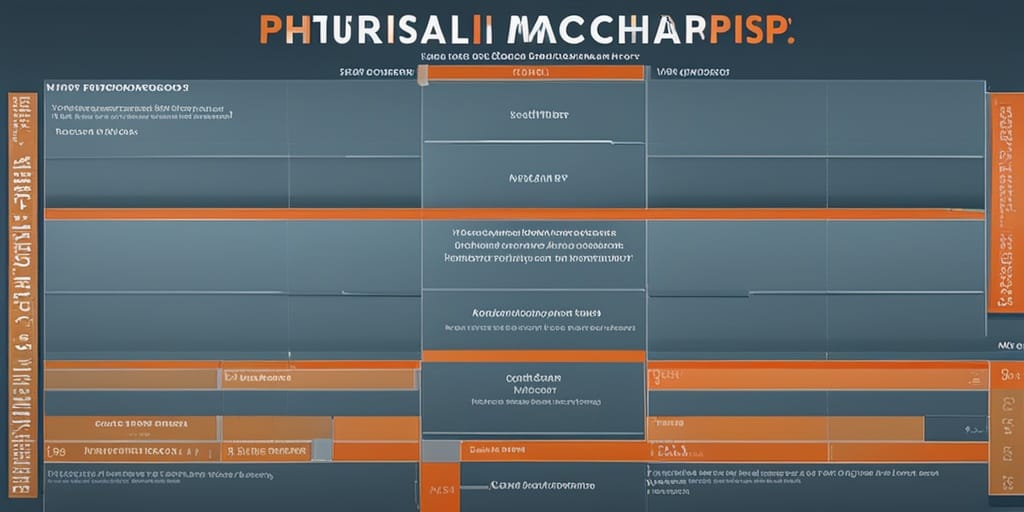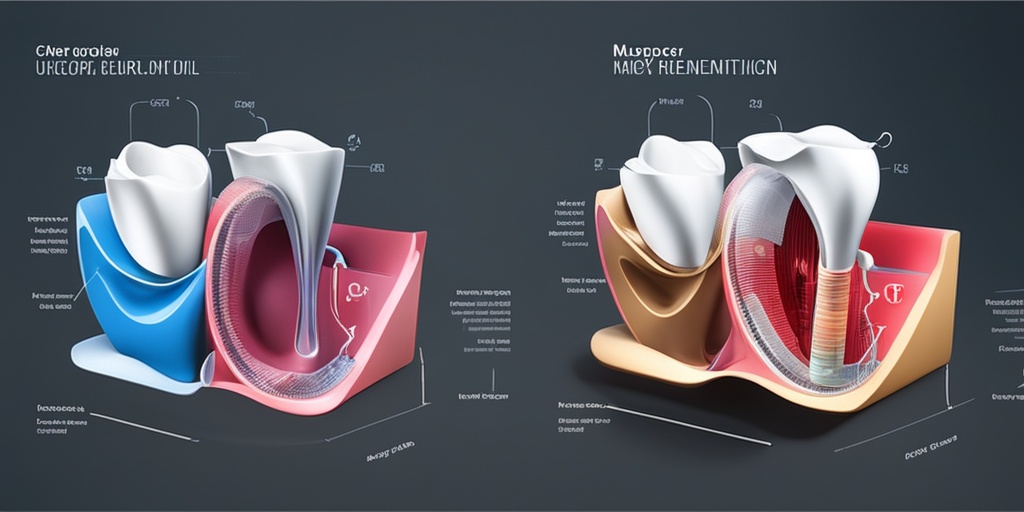What Is MPS?
Have you ever come across the term MPS and wondered what it stands for? You’re not alone! MPS is an acronym that can have different meanings depending on the context. In this article, we’ll delve into the world of MPS, exploring its various meanings, types, and classifications.
The Multiple Meanings of MPS
MPS can stand for several things, including:
- Mucopolysaccharidosis, a group of rare genetic disorders that affect the body’s ability to break down sugar molecules.
- Master of Professional Studies, a graduate degree that focuses on professional development and practical skills.
- Member of Parliament, a title given to elected representatives in a parliamentary system of government.
- Military Police, a law enforcement agency responsible for maintaining order and discipline within the military.
- Managed Print Services, a program that helps organizations manage and optimize their printing infrastructure.
As you can see, MPS can have different meanings depending on the context. In this article, we’ll focus on the medical aspect of MPS, specifically Mucopolysaccharidosis.
MPS Types and Classification
Mucopolysaccharidosis (MPS) is a group of lysosomal storage disorders caused by the deficiency of specific enzymes required for the breakdown of sugar molecules. There are seven types of MPS, each with its unique set of symptoms and characteristics.
The Seven Types of MPS
The seven types of MPS are classified based on the specific enzyme deficiency and the resulting symptoms. Here’s a brief overview of each type:
- MPS I (Hurler syndrome): Caused by a deficiency of the enzyme alpha-L-iduronidase, MPS I is characterized by severe physical and mental disabilities.
- MPS II (Hunter syndrome): Caused by a deficiency of the enzyme iduronate-2-sulfatase, MPS II affects only males and is characterized by progressive physical disabilities.
- MPS III (Sanfilippo syndrome): Caused by a deficiency of one of four enzymes, MPS III is characterized by severe neurological symptoms and delayed development.
- MPS IV (Morquio syndrome): Caused by a deficiency of the enzyme N-acetylgalactosamine-6-sulfatase, MPS IV is characterized by skeletal abnormalities and short stature.
- MPS V (not recognized as a distinct MPS type): This type is no longer recognized as a distinct MPS type and is now classified as MPS IX.
- MPS VI (Maroteaux-Lamy syndrome): Caused by a deficiency of the enzyme N-acetylgalactosamine-4-sulfatase, MPS VI is characterized by skeletal abnormalities and short stature.
- MPS VII (Sly syndrome): Caused by a deficiency of the enzyme beta-glucuronidase, MPS VII is characterized by severe physical and mental disabilities.
Each type of MPS has its unique set of symptoms and characteristics, and diagnosis is typically made through a combination of clinical evaluation, laboratory tests, and genetic analysis.
If you or a loved one is affected by MPS, it’s essential to consult with a healthcare professional for proper diagnosis and treatment. Additionally, resources like Yesil Health AI (yesilhealth.com) can provide valuable information and support for individuals affected by MPS.
Stay tuned for more information on MPS, including its causes, symptoms, diagnosis, and treatment options. 🧬💊

MPS Symptoms in Children and Adults
Mucopolysaccharidosis (MPS) is a rare genetic disorder that affects the body’s ability to break down and recycle sugar molecules called glycosaminoglycans (GAGs). The accumulation of these molecules leads to a range of symptoms that can vary in severity and impact different parts of the body. In this section, we’ll explore the common MPS symptoms in children and adults.
Common MPS Symptoms in Children
Children with MPS often exhibit a range of symptoms, including:
- Coarse facial features: Children with MPS may have a distinctive facial appearance, including a prominent forehead, a flat nose bridge, and a protruding jaw.
- Delayed development: MPS can cause delayed development, including delayed walking, talking, and cognitive skills.
- Joint stiffness and pain: Stiffness and pain in the joints, particularly in the hands, feet, and hips, are common in children with MPS.
- Respiratory problems: MPS can cause respiratory issues, such as frequent ear infections, sinus infections, and sleep apnea.
- Enlarged organs: The liver, spleen, and heart may become enlarged due to the accumulation of GAGs.
- Vision and hearing loss: MPS can cause vision and hearing loss, as well as corneal clouding and retinal degeneration.
MPS Symptoms in Adults
Adults with MPS may experience a range of symptoms, including:
- Joint pain and stiffness: Joint pain and stiffness can worsen over time, making it difficult to perform daily activities.
- Respiratory problems: Respiratory issues, such as chronic bronchitis and emphysema, can occur in adults with MPS.
- Cardiovascular problems: MPS can increase the risk of cardiovascular disease, including heart failure and coronary artery disease.
- Cognitive impairment: Adults with MPS may experience cognitive impairment, including memory loss and difficulty with concentration.
- Sleep disturbances: Sleep apnea and other sleep disturbances are common in adults with MPS.
- Reduced mobility: MPS can cause reduced mobility, making it difficult to perform daily activities and maintain independence.
It’s essential to note that MPS symptoms can vary in severity and impact different individuals in unique ways. If you suspect that you or a loved one may have MPS, it’s crucial to consult with a healthcare professional for proper diagnosis and treatment. 🏥
MPS Causes and Genetic Factors
Mucopolysaccharidosis (MPS) is a genetic disorder caused by mutations in specific genes that code for enzymes involved in the breakdown and recycling of glycosaminoglycans (GAGs). In this section, we’ll explore the genetic factors that contribute to MPS and the causes of this rare disorder.
Genetic Mutations and MPS
MPS is caused by mutations in one of several genes that code for enzymes involved in the breakdown and recycling of GAGs. These genes include:
- IDUA: The IDUA gene codes for the enzyme alpha-L-iduronidase, which breaks down GAGs.
- IDS: The IDS gene codes for the enzyme iduronate-2-sulfatase, which breaks down GAGs.
- SGSH: The SGSH gene codes for the enzyme heparan N-sulfatase, which breaks down GAGs.
- GNPTAB: The GNPTAB gene codes for the enzyme N-acetylglucosamine-1-phosphotransferase, which breaks down GAGs.
These genetic mutations can be inherited in an autosomal recessive pattern, meaning that a child must inherit two copies of the mutated gene (one from each parent) to develop MPS. 🧬
Inheritance Patterns and MPS
MPS can be inherited in different patterns, including:
- Autosomal recessive inheritance: This is the most common inheritance pattern, where a child inherits two copies of the mutated gene (one from each parent).
- Autosomal dominant inheritance: In this pattern, a child inherits one copy of the mutated gene from an affected parent.
- X-linked inheritance: This pattern occurs when the mutated gene is located on the X chromosome, and males are more severely affected than females.
Understanding the genetic causes of MPS is crucial for developing effective treatments and management strategies for this rare disorder. 💡

MPS Diagnosis and Testing
Receiving a diagnosis of Mucopolysaccharidosis (MPS) can be overwhelming, but understanding the diagnostic process and testing involved can help alleviate some of the uncertainty. In this article, we’ll delve into the world of MPS diagnosis and testing, exploring the various methods used to identify this rare genetic disorder.
What is MPS?
Before we dive into the diagnosis and testing, let’s take a brief look at what MPS is. MPS is a group of inherited lysosomal storage disorders caused by the deficiency of specific enzymes required for the breakdown and recycling of mucopolysaccharides (complex carbohydrates). This deficiency leads to the accumulation of toxic substances in cells, resulting in progressive cellular damage and organ dysfunction.
Diagnosing MPS
The diagnosis of MPS typically involves a combination of clinical evaluation, laboratory tests, and genetic analysis. Here are some of the key steps involved in the diagnostic process:
- Clinical Evaluation: A thorough physical examination and medical history review to identify characteristic symptoms and signs of MPS, such as coarse facial features, joint stiffness, and developmental delays.
- Enzyme Assays: Laboratory tests to measure the activity of specific enzymes involved in mucopolysaccharide breakdown. Low enzyme activity can indicate an MPS diagnosis.
- Urine Tests: Analysis of urine samples to detect elevated levels of mucopolysaccharides, which can be indicative of MPS.
- Genetic Testing: Molecular genetic testing to identify mutations in the genes responsible for MPS. This can involve DNA sequencing, gene expression analysis, or other techniques.
- Imaging Studies: Radiographic and imaging studies, such as X-rays, CT scans, or MRI, to evaluate the extent of organ damage and skeletal abnormalities.
Newborn Screening for MPS
In recent years, newborn screening for MPS has become more widespread. This involves testing newborns for MPS shortly after birth, allowing for early diagnosis and intervention. Newborn screening typically involves a heel prick blood test to measure enzyme activity.
MPS Treatment Options and Management
While there is no cure for MPS, various treatment options and management strategies can help alleviate symptoms, slow disease progression, and improve quality of life. Let’s explore the different approaches to MPS treatment and management.
Enzyme Replacement Therapy (ERT)
ERT is a widely used treatment for MPS, involving the intravenous infusion of recombinant enzymes to replace the deficient enzymes. This helps to break down and remove accumulated mucopolysaccharides, reducing cellular damage and organ dysfunction.
Substrate Reduction Therapy (SRT)
SRT is an oral medication that inhibits the production of mucopolysaccharides, reducing the substrate available for accumulation. This approach can be used in combination with ERT or as a standalone treatment.
Bone Marrow Transplantation (BMT)
BMT involves the transplantation of healthy bone marrow stem cells to replace the defective cells responsible for MPS. This can help to restore enzyme production and reduce disease progression.
Symptomatic Management
In addition to these disease-modifying treatments, symptomatic management is crucial for improving quality of life. This may involve:
- Pain Management: Medications and therapies to alleviate chronic pain and discomfort.
- Physical Therapy: Exercises and stretches to improve mobility, strength, and flexibility.
- Surgical Interventions: Procedures to address skeletal abnormalities, such as spinal fusion or joint replacement.
- Respiratory Support: Oxygen therapy, ventilation, or other interventions to manage respiratory complications.
By understanding the diagnosis and testing process, as well as the various treatment options and management strategies available, individuals with MPS and their families can better navigate this complex condition and improve their overall well-being 💊.

MPS Enzyme Replacement Therapy
Mucopolysaccharidosis (MPS) is a group of rare genetic disorders caused by the deficiency of specific lysosomal enzymes responsible for breaking down glycosaminoglycans (GAGs). The accumulation of GAGs in cells and tissues leads to progressive cellular damage and multi-system disease. Enzyme replacement therapy (ERT) is a treatment approach that has revolutionized the management of MPS, offering hope to patients and their families.
How ERT Works
In MPS, the deficient enzyme is replaced with a functional one, which helps to break down the accumulated GAGs. This process reduces the substrate accumulation, slows down disease progression, and improves symptoms. ERT involves regular intravenous infusions of the recombinant enzyme, which is produced through biotechnology.
Benefits of ERT
The benefits of ERT in MPS are numerous:
- Improved respiratory function: ERT helps to reduce the accumulation of GAGs in the lungs, leading to improved respiratory function and reduced respiratory infections.
- Enhanced mobility: By reducing the accumulation of GAGs in joints and bones, ERT improves mobility, reduces pain, and enhances quality of life.
- Cognitive improvement: ERT has been shown to improve cognitive function and reduce the risk of cognitive decline in MPS patients.
- Reduced risk of complications: ERT reduces the risk of complications such as heart disease, sleep apnea, and vision loss.
ERT for Different MPS Types
ERT is available for several MPS types, including:
- MPS I (Hurler syndrome): Aldurazyme (laronidase) is the approved ERT for MPS I.
- MPS II (Hunter syndrome): Elaprase (idursulfase) is the approved ERT for MPS II.
- MPS IV A (Morquio A syndrome): Vimizim (elosulfase alfa) is the approved ERT for MPS IV A.
- MPS VI (Maroteaux-Lamy syndrome): Naglazyme (galsulfase) is the approved ERT for MPS VI.
MPS Bone Marrow Transplant
Bone marrow transplant (BMT) is a treatment option for MPS patients, particularly those with severe forms of the disease. BMT involves replacing the patient’s bone marrow with healthy bone marrow stem cells from a donor.
How BMT Works
BMT works by replacing the defective bone marrow cells with healthy ones, which can produce the necessary enzymes to break down GAGs. This process helps to reduce the accumulation of GAGs, slows down disease progression, and improves symptoms.
Benefits of BMT
The benefits of BMT in MPS include:
- Improved enzyme production: BMT enables the production of functional enzymes, which helps to break down GAGs and reduce disease progression.
- Reduced risk of complications: BMT reduces the risk of complications such as heart disease, sleep apnea, and vision loss.
- Improved quality of life: BMT can improve cognitive function, mobility, and overall quality of life for MPS patients.
Challenges and Risks of BMT
While BMT can be a life-changing treatment for MPS patients, it’s not without challenges and risks:
- Graft-versus-host disease: The donated bone marrow cells may react against the patient’s body, leading to graft-versus-host disease.
- Infection and bleeding risks: BMT patients are at risk of infection and bleeding due to the suppression of their immune system.
- Long-term side effects: BMT can cause long-term side effects such as infertility, secondary cancers, and chronic health problems.
Despite these challenges, BMT remains a vital treatment option for MPS patients, offering hope for improved health and quality of life. 💊

Frequently Asked Questions about MPS
What does MPS stand for?
MPS stands for Multiple Peripheral Sensitivities. However, it can also refer to other meanings depending on the context, such as Master of Professional Studies, Metropolitan Police Service, or Military Police Service.
What is MPS disease?
MPS (Mucopolysaccharidosis) disease is a rare genetic disorder caused by the deficiency of certain enzymes needed to break down sugar molecules. It affects the body’s ability to break down and recycle cellular waste, leading to a range of symptoms including developmental delays, physical disabilities, and organ damage.
What is an MPS degree?
An MPS degree stands for Master of Professional Studies. It is a graduate degree that focuses on providing advanced education and training in a specific field or industry. MPS degrees are often designed for working professionals who want to enhance their skills and knowledge in their chosen field.
What is the difference between MPS and MPH?
MPS (Master of Professional Studies) and MPH (Master of Public Health) are both graduate degrees, but they have different focuses. MPS is a more general degree that can be applied to various fields, while MPH is specifically focused on public health. MPH degrees typically require more coursework in health-related topics and may have more stringent admission requirements.
What is MPS in Management?
MPS in Management is a Master of Professional Studies degree that focuses on management and leadership. It is designed to provide advanced education and training in management principles, practices, and strategies. This degree can be beneficial for working professionals who want to move into leadership roles or start their own businesses.
What is MPS in Applied Economics Management?
MPS in Applied Economics Management is a Master of Professional Studies degree that combines economics and management. It is designed to provide advanced education and training in economic principles, management practices, and data analysis. This degree can be beneficial for working professionals who want to work in economic development, policy analysis, or business management.
How do I become an MPS?
To become an MPS, you typically need to earn a Master of Professional Studies degree from an accredited institution. This usually requires a bachelor’s degree and a minimum GPA, as well as standardized test scores such as the GRE or GMAT. You may also need to have relevant work experience and letters of recommendation.
What are the benefits of having an MPS?
Having an MPS degree can provide several benefits, including advanced knowledge and skills in your chosen field, increased earning potential, and improved job prospects. It can also provide a competitive edge in the job market and open up opportunities for leadership and management roles.
Can I get an MPS online?
Yes, many institutions offer online MPS programs that can be completed remotely. These programs are often designed for working professionals who need flexibility in their schedules. However, it’s essential to ensure that the institution and program are accredited and reputable.
How long does it take to get an MPS?
The length of time it takes to get an MPS degree can vary depending on the institution and program. Typically, it can take around 1-2 years to complete a full-time MPS program, while part-time programs may take longer.
What are the career opportunities with an MPS?
With an MPS degree, you can pursue a range of career opportunities in your chosen field. This can include leadership and management roles, as well as specialized positions in areas such as healthcare, finance, or education. The specific career opportunities will depend on your field of study and work experience.




